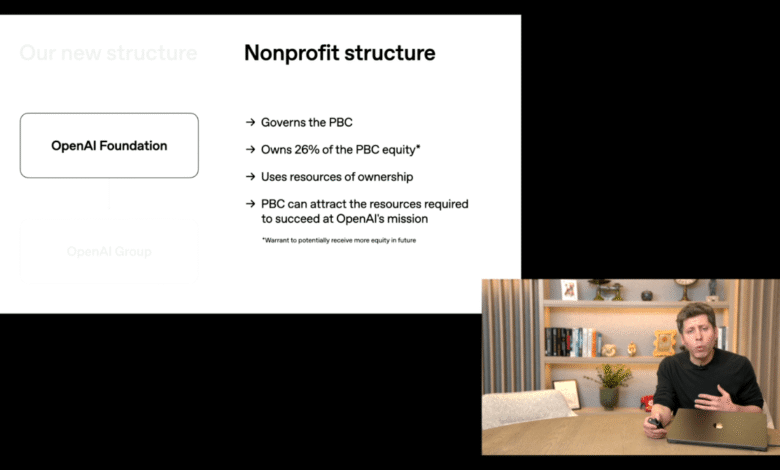OpenAI to Launch ‘Legitimate AI Researcher’ by 2028, Says Sam Altman

▼ Summary
– OpenAI aims to develop an intern-level AI research assistant by September 2026 and a fully automated AI researcher by 2028, according to CEO Sam Altman.
– The company restructured as a public benefit corporation, allowing it to raise capital more freely while maintaining a commitment to responsible AI development.
– OpenAI’s chief scientist described the AI researcher as a system capable of autonomously delivering on larger research projects and believes superintelligence may be achievable within a decade.
– To achieve its goals, OpenAI will focus on algorithmic innovation and scaling up “test time compute,” dedicating significant computational resources to complex problems.
– The restructuring enables OpenAI to fund large-scale infrastructure projects, including a $1.4 trillion commitment to build 30 gigawatts of infrastructure for scientific advancements.
OpenAI’s deep learning capabilities are accelerating at a remarkable pace, with systems now tackling intricate challenges more swiftly than ever before. CEO Sam Altman announced during a recent livestream that the company expects to deploy an intern-caliber AI research assistant by September 2026, followed by a fully autonomous “legitimate AI researcher” by 2028. This aggressive timeline was revealed on the same day OpenAI completed its transition to a public benefit corporation, a move that frees the organization from its former non-profit constraints and unlocks new avenues for financial investment.
Chief Scientist Jakub Pachocki, who appeared alongside Altman, clarified that this AI researcher is not a person who studies artificial intelligence, but rather a sophisticated system designed to independently execute substantial research initiatives. Pachocki further suggested that deep learning systems could potentially achieve superintelligence within the next ten years, defining this as systems that outperform humans across a wide array of crucial activities.
To reach these milestones, OpenAI is concentrating on two primary approaches: persistent algorithmic breakthroughs and a massive increase in “test time compute,” which refers to the duration models dedicate to reasoning through problems. Current AI can manage tasks requiring up to five hours of thought and can compete with elite human participants in events such as the International Mathematical Olympiad. Pachocki anticipates this capacity will grow quickly, partly by allocating significantly greater computational resources to allow models to deeply contemplate complex issues. He noted that for transformative scientific discoveries, it would be justifiable to devote the entire computing capacity of data centers to solving a single problem.
These objectives support OpenAI’s broader mission to propel scientific inquiry forward, enabling AI to potentially outpace human researchers in making discoveries, address problems currently beyond human reach, and greatly accelerate innovation in sectors like healthcare, physics, and technology development.
Altman emphasized that the corporate restructuring establishes a supportive framework for OpenAI’s ambitious research schedule while upholding a dedication to responsible AI practices. Under the new arrangement, the non-profit OpenAI Foundation, which concentrates on scientific progress, will hold a 26 percent stake in the for-profit entity and will steer the research agenda. The foundation has also pledged $25 billion toward using AI to find cures for diseases and will assist in overseeing AI research and safety programs.
According to Altman, the for-profit division’s enhanced ability to secure capital will facilitate the scaling up of essential infrastructure needed to realize scientific breakthroughs. He disclosed that OpenAI has committed to developing 30 gigawatts of infrastructure, representing a financial commitment of $1.4 trillion over the coming years.
(Source: TechCrunch)





